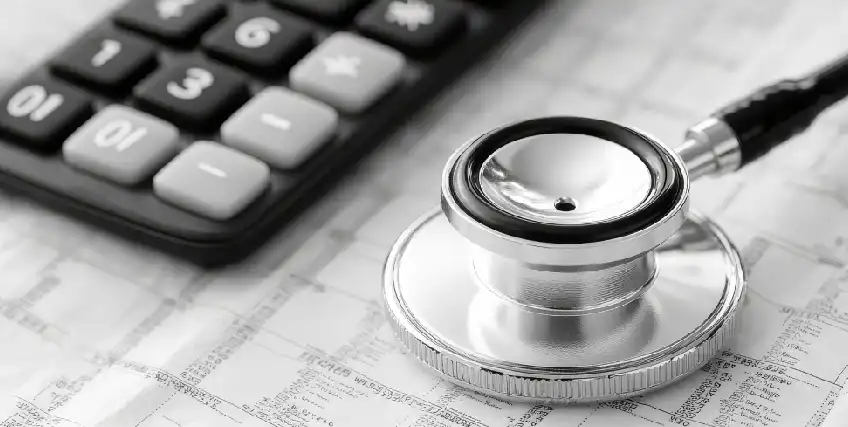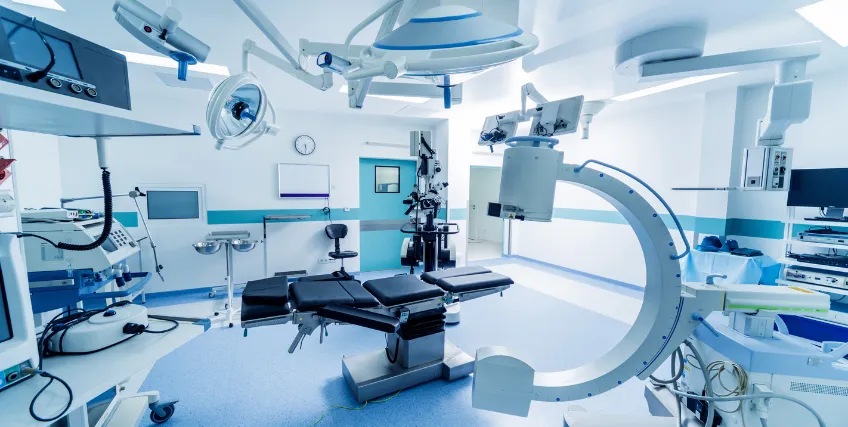How To Use Your Physician Practice Loan
March 1, 2025 | Last Updated on: March 1, 2025

How To Use Your Physician Practice Loan
For physicians stepping into practice ownership or looking to expand, a physician practice loan can be a game-changer. This specialized financing option empowers doctors to establish, grow, or streamline their practice, but knowing how to use these funds strategically is crucial to maximize their impact.
We’ll walk you through the essentials of physician practice loans, from setting up your loan to making smart investments that align with your practice goals. Whether you're considering leasing a new office space, upgrading diagnostic equipment, or even consolidating previous debts, this article will give you the insights needed to use your physician practice loan efficiently and effectively. Let's explore how to make the most of this unique financial tool to help your practice thrive.
What are medical practice business loans?
A medical practice loan provides doctors and other medical practitioners the funding they need to open, run, and expand their businesses.
The amount you can borrow with a medical practice loan — and the structure of the financing — depends on what you need the money for. Loan amounts can range from a few thousand dollars to help cover a cash-flow issue to five million dollars or more to open a new location.
Traditional banks and online lenders offer medical practice loans that can be used by general practitioners and family physicians as well as specialists, such as dermatologists, optometrists, pediatricians, plastic surgeons, podiatrists, sports medicine experts, and others. The best physician loan lenders will offer preferred rates and a fast financing experience for medical practices, so be sure to look for those details when you contact possible lenders for your physician practice loan.
Most medical practice loans are reserved for physicians already practicing medicine that have been in business for a few years. Some may be available to those who are licensed and preparing to start a practice. Newer doctors are more likely to be approved for financing from alternative lenders. The same applies to doctors, dentists, and other medical professionals still in residency and planning to open their first practice.
Physician loans are typically secured. However, some may be unsecured. You may need to sign a personal guarantee, which makes you personally responsible for the loan. You will also likely have to put up assets owned by the business, such as property, vehicles, and equipment, as collateral.
Uses of physician practice loans
Funds from physician practice loans can be leveraged for many purposes. Some common ones include:
Working capital
Working capital is the funds you use to keep your business running on a day-to-day basis. For instance, if you’re a business owner who needs cash to make payroll or pay your rent while waiting for accounts receivables, money from a medical practice loan could provide the working capital you need.
Buying supplies and inventory
Another common use for medical practice loan proceeds is stocking up on inventory and the supplies needed to treat patients, especially during unexpected regional medical crises. Leveraging financing for this purpose allows you to meet patient demand without negatively impacting cash flow.
Equipment financing
For many medical operations, especially clinics, radiology practices, and dentist offices, equipment is a significant expense. Medical practice loans make it possible to purchase new equipment or upgrade it as needed. Money from these loans can be used to buy everything from essential items like exam tables and computers to more specialized and costly equipment, such as x-ray imaging machines, retinal scanners, and surgical equipment.
Buying or improving commercial real estate
Many types of medical practices require highly specialized spaces to operate. No ordinary storefront will do. That’s why real estate is a significant expense for many medical practitioners. With constant advances in healthcare, it’s necessary to upgrade or reconfigure spaces. Medical practice loans for real estate are similar to your mortgage on your home and can cover all types of real estate purchase and improvement needs.
Startup costs
Opening a new practice typically costs a lot of money, more than most medical school graduates or their families have. You must acquire office space, hire and train staff, purchase equipment and supplies, fund marketing and promotional activities, and more. A medical practice loan can help cover some of these ordinary startup expenses.
Buying an existing practice
Acquiring a successful medical practice is an alternative to starting one from the ground up. If a physician you know is retiring, they may prefer to sell their practice to a trusted colleague rather than close it down. Medical practice funding can help with financing the purchase of an existing medical practice.
Refinancing medical business debt
If you already have loans associated with your medical practice, refinancing them could save you money over the long run. It could also simplify bookkeeping. While many physician loan interest rates might be at favorable levels, if you took out a loan when interest rates were high you could still benefit from a lower rate if you refinance. If you’re able to get a new physician loan at a lower rate, you could streamline your payments and reduce the overall cost of your debt.
Medical practice financing options
There are many loan options for securing medical practice funding depending on your cash needs and what you need financing for. With that in mind, here are popular funding options for medical practices:
Medical practice loans
Medical practice loans are developed exclusively to meet the unique needs of doctors, dentists, and other healthcare professionals. These specialized business loans are available through traditional banks and financial institutions and alternative and online lenders. What differentiates medical practice loans from other types of business financing is that they’re designed to satisfy the unique needs of medical professionals and their financial realities.
For instance, if you’re starting a practice while paying off medical school debt, a lender may be less likely to count that debt against you for loan approval purposes because of your high earning potential. In most cases, a small business owner would not get the same consideration.
Medical practice loans typically have higher borrowing levels than other small business loan types.
Equipment financing
If you need money to buy medical equipment for your practice, an equipment loan may be a wiser option than a physician loan. With equipment financing, the equipment typically serves to back the loan as collateral. Equipment financing typically comes with lower interest rates than other loan types. Terms are usually aligned with the expected life of the equipment. Sometimes, a down payment is required with this type of loan, but it’s possible to get full financing for equipment from some lenders. Often, financing is available through equipment suppliers.
Term loans
Term loans provide a lump sum of cash upfront, typically at a fixed interest rate. You can then use that money for whatever you need to purchase or operate a healthcare business.
Short-term loans typically come with terms of one year or less. Long-term loans usually give you five to thirty years to repay them. Eligibility for term loans and other financial products are typically based on credit approval, which means having good to excellent credit scores and detailed credit history. Borrowers with solid creditworthiness can potentially score relatively low interest rates and favorable repayment terms.
Small Business Administration (SBA) loans
In most cases, the SBA doesn’t offer financing directly. Loans are provided through a network of approved small business lenders. The SBA guarantees a percentage of each loan. Think of it as an insurance policy protecting lenders against default. The guarantee encourages them to offer more financing to eligible small businesses.
Small business owners can get up to $5 million in funding through the popular SBA 7(a) loan program. Interest rates are attractive, and you can use the loan for virtually any business need.
SBA loans are typically reserved for more established businesses. If you need funding for a medical startup, a Small Business Administration loan probably isn’t right for you.
Business line of credit
A business line of credit is a revolving line. Instead of receiving a lump sum of cash when you’re approved for it, you get a credit limit you can draw against as needed. You only pay interest on the money you borrow.
Getting a business line of credit can be a smart move. You can rest assured knowing you have a line of credit to borrow against if your practice ever has an emergency financial need. Business credit lines come with reasonable interest rates that are somewhat higher than term loans.
The application process for medical practice financing
Completing a loan application for medical practice financing is similar to the process for other types of business loans, whether applying for traditional bank loans or through alternative lenders. Here are steps to make it more likely you’ll be approved.
- Review your credit report and scores. This will let you know what a lender will see as they review your financials. Take steps to correct any errors before applying for a loan.
- Develop or update a complete business plan. It will help lenders understand what you will use the financing for and how you plan to repay it.
- Take stock of your business financials. Review critical reports, including your profit-and-loss and cash flow statements, to ensure everything is as healthy as it can be.
- Consider what collateral you could put up to back the medical practice loan. Figure out what personal assets or business equipment you could offer up.
- Compare qualification requirements. It will help you determine which loans and providers you have the best odds for approval. Traditional lenders tend to have more stringent requirements than online ones.
Once you select a lender, read and complete the application carefully. Ensure you provide all the information requested. Include copies of your personal and business tax returns and bank statements if required as part of loan underwriting.
Finally, before you agree to any financing, review the loan terms. This includes the physician loan rate that is being charged, as well as the repayment conditions and any collateral associated with your particular loan. Consider the annual percentage rate, loan fees, and repayment terms to ensure you can pay the money back.
Final Thoughts on Physician Loans
A physician practice loan is more than just financial support—it's an investment towards your practice needs and an opportunity to shape the kind of care and experience you provide.
With the right approach, a physician practice loan build the practice you envision by helping you cover operating expenses and other necessary monthly payments. Embrace this financial tool wisely, and set the stage for lasting success in your medical journey.
FAQs on Physician Loans
Who can apply for medical practice loans?
Medical practice loans are typically available to licensed healthcare professionals, including physicians, dentists, veterinarians, and other medical practitioners looking to start, expand, or improve their practices. Both newly licensed professionals and established practitioners can apply, though eligibility requirements may vary by lender.
What are the advantages of an SBA 7(a) loan for a medical practice?
An SBA 7(a) loan offers medical practices favorable terms like low interest rates, longer repayment periods, and smaller down payments, making it easier to manage cash flow. It also provides flexibility in funding, allowing practices to use the loan for a wide range of needs, from purchasing equipment to expanding facilities.
What are the pros of loans for medical professionals?
They can provide quick access to capital for critical expenses, like equipment, office expansion, or practice acquisition, supporting both new and established professionals in building successful practices. Many physician loan rates are affordable since for many lenders, including banks and credit unions, medical practices are preferred industries.
What credit score do you need for a physician loan?
Physician loans generally require a credit score of at least 700, though some lenders may accept slightly lower scores, especially for established professionals. Higher scores often improve your chances for better rates and terms, making a solid credit history advantageous when applying.




